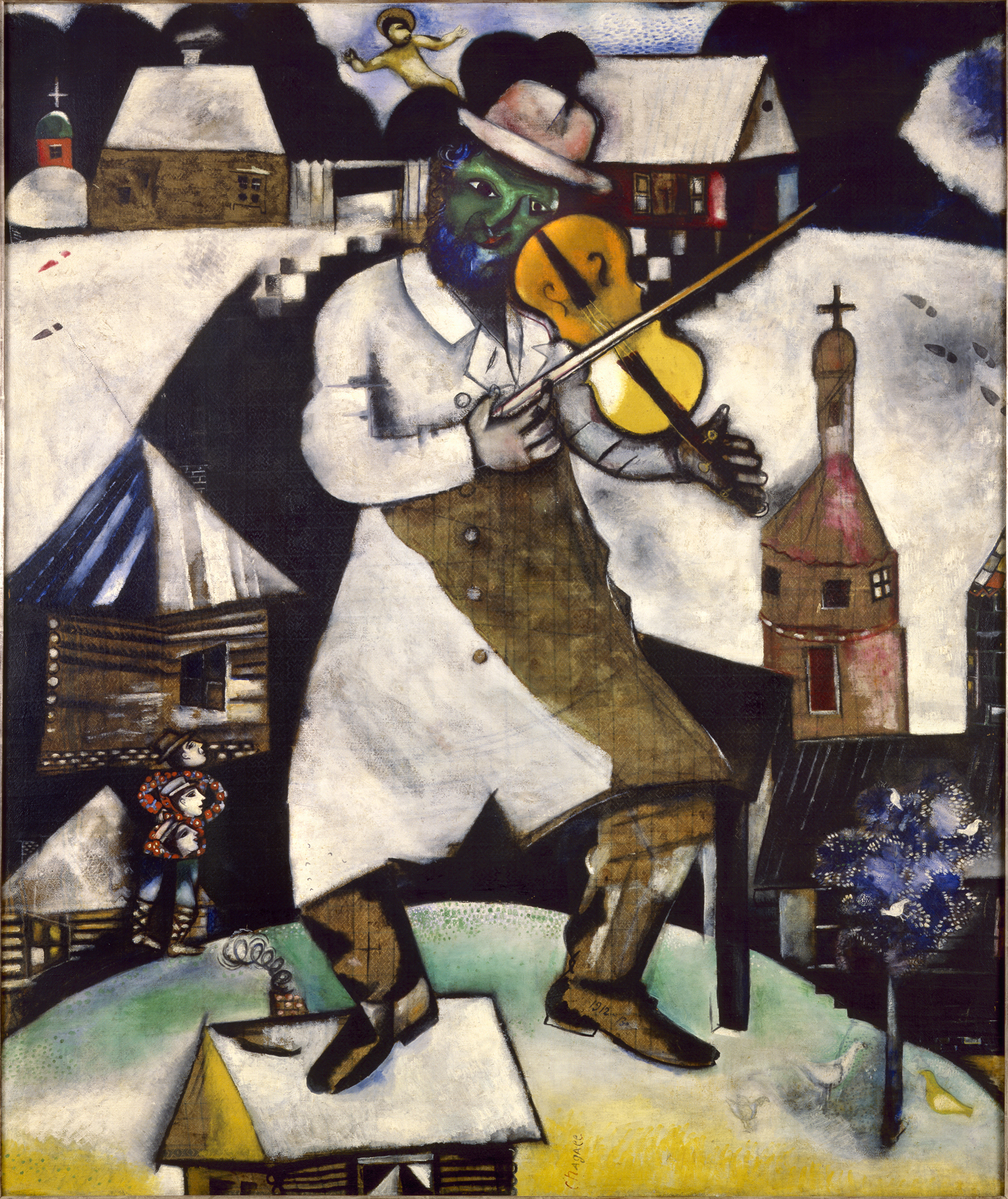 |
| Chagall's parents |
He came from a shtetl (Jewish ghetto) in Vitebsk, Russia, where an uncle was the archetypal fiddler on the roof (literally––he liked the view from up there), so this image appears in many paintings. The flying goats and heads of goats are reminiscent of the days when Chagall as an adolescent used to go and comfort the animals during their last hours before slaughter. His father worked for a fish merchant. His mother bribed a schoolmaster to get her son an academic education. He managed to get into the Imperial Academy of Art at St. Petersburg, but kept breaking the rules and moved to Paris to live a Bohemian life, befriended by Apollinaire, Delaunay and Léger where, though lonely and homesick, he managed to acquire some fame, compiling what he called his inventaire of the poverty of Vitebsk. In 1914 his work was exhibited in Berlin but he soon returned to Russia to establish an academy at home, after marrying a Vitebsk girl, Bella, at the start of World War I. The Soviets, when they came to power, dismissed him and ransacked his studio, though the scenery he'd painted for a Jewish theatre in Moscow was rescued, hidden away by one of the actors.
Chagall lived an impoverished life teaching war orphans in the 1920s. Because the paintings that had been on show in Berlin had been lost, he set about recreating them. Returning to Paris, he worked as an illustrator (of Gogol and of La Fontaine and the Bible). Then came persecution by the Nazis––his Crucifixion Blanche was painted at this time. He never understood "why men can be so cruel." In May '41 he and his wife left for America (where his wife died––tout est assombri, he commented). Matisse had Chagall participate in the Artists in Exile exhibition and he designed the backdrops for Stravinsky's Firebird ballet.
 |
| La Vie |


No comments:
Post a Comment